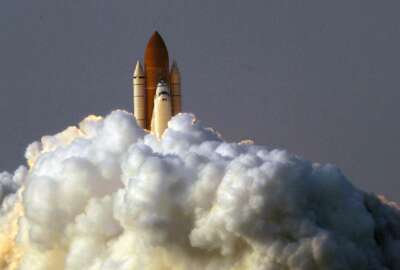
NASA adapting to, benefiting from more crowded spaceflight industry
The changing dynamic in space exploration is turning out to be mutually beneficial for both NASA and the companies with which it finds itself collaborating.
Almost 60 years after its formation, NASA is learning to make room for private industry in a domain it’s monopolized for so long. But the changing dynamic in space exploration is turning out to be mutually beneficial for both the agency and the companies with which it finds itself collaborating.
“Today, the market is more mature,” Philip McAlister, director of commercial spaceflight development at NASA HQ, said on Agency in Focus – NASA. “There’s more people, more companies doing more things in space every day. It’s become a real dynamic and interesting industry. I think NASA has, to some extent, enabled that, and I think that’s something we’re all proud of.”
McAlister said working in close proximity with the private sector has caused a culture change at NASA. Collaboration has expanded the scope of ideas NASA is willing to consider; the agency now has a better appreciation for different possibilities.
“When NASA was pretty much the only game in town, you didn’t have this diversity of ideas,” he told the Federal Drive with Tom Temin. “And I think that’s enriched our culture and our capability because we have come to realize, ‘Hey, there’s a lot of ways you can build a spacecraft,’ and some of these other companies have some really interesting techniques that maybe we haven’t adopted here at NASA. And by working closely with them, we see how these techniques operate. We see where maybe there are advantages to adopting some of their techniques.”
Part of the reason for that is private industry is less risk-averse than NASA has historically had to be. Private industry can focus with a keener eye on moving quickly and saving money, whereas NASA had to prioritize consensus. In order to be a good steward of taxpayer money and ensure successful outcomes, NASA would take more time and spend more money in order to ensure everyone was on the same page, and agreed on the outcome.
Now, its collaboration with the burgeoning spaceflight industry is allowing it to focus less on hardware and technical aspects, and more on mission.
“What has changed is the nature of the relationship between us and the private sector,” McAlister said. “We’re giving more responsibility to the private sector for them to use their own kind of design techniques and use their own culture and bring some of their own business case assumptions into building their spacecraft.”
NASA is also looking at dividing its domain. For now, commercial spaceflight is relegated to low-earth orbit, about 1,200 miles up. That’s where the International Space Station resides. On the other hand, it’s mostly keeping deep-space exploration to itself. There’s not a lot of commercial opportunity there yet — the risks are higher, as are the costs.
Meanwhile, for low-earth orbit missions, NASA is relying on industry to help deliver its payloads. But it’s not completely hands-off in the process. NASA certifies companies based on specific criteria for each mission.
“For very high-value payloads, we will go to the commercial sector, and they have to be certified to a fairly strict regimen of criteria, both reliability and analysis,” McAlister said. “For less critical payloads that you may be able to take a higher risk posture on, you can use a different set of criteria, maybe relax some of those analyses or reliability requirements and use a bigger pool of launch vehicles to get a more cost-effective launch.”
NASA also embeds personnel with the engineers of various companies like Boeing and Space X to better understand their processes and what their equipment is capable of.
“We wanted to have extensive insight into the system,” McAllister said. “And for us, that phrase, insight, means we want to understand the true nature of the system. How it operates, how it’s going to work, what are it’s potential failure modes, and to do that, we needed to be embedded with the companies’ engineers.”
The big difference is that NASA is not making decisions about these capabilities anymore. Decisions about propulsion, designs, hardware and other technical details are left up to the companies themselves. NASA just gathers data and analysis, and uses it to evaluate the companies capabilities as they apply to NASA’s mission.
McAlister said another benefit of this collaboration is an increased visibility into spaceflight as an industry. New capabilities, new hardware and new products have stimulated the market, and led to an increase in the amount of people who are viewing it as an interesting industry to pursue employment in.
In other words, working with the commercial sector has helped to make space cool again.
Copyright © 2024 Federal News Network. All rights reserved. This website is not intended for users located within the European Economic Area.
Daisy Thornton is Federal News Network’s digital managing editor. In addition to her editing responsibilities, she covers federal management, workforce and technology issues. She is also the commentary editor; email her your letters to the editor and pitches for contributed bylines.
Follow @dthorntonWFED




